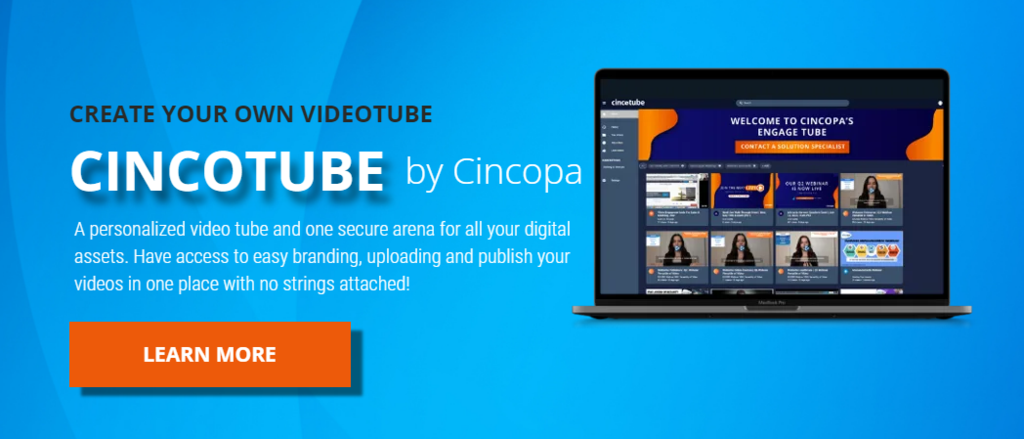
To use the right content distribution methods, brands need to understand more about their target audiences. Analyzing data offers a way to learn more about demographics, their interests and their interactions with a brand. They can then be segmented into different groups and targeted with the right content using a specific distribution method. Using the right distribution strategies can help to boost brand awareness, build relationships with prospects and encourage them to become customers.
What is content distribution?
Creating content is only the first step. The content has to reach the right audiences. There is no return on the investment of time and energy in creating content like video assets or podcasts if no one listens to them. Content distribution refers to providing content to targeted audiences for them to consume. There are many content distribution channels, and formats brands can use to reach the right audiences. A content distribution strategy is a strategic plan for creating and distributing content.

Content types for distribution
There are many types of content brands can create, and each type typically requires its own content distribution strategy.
- Videos are one of the most popular forms of content today. They may include demo videos, ‘how-to’ videos, ‘behind-the-scenes’ videos and much more. Most brands use YouTube for distributing videos due to its wide reach. However, brands have less control over their video assets when using a channel they don’t own, like YouTube. Using corporate videotube like CincoTube is a better solution.
- Podcasts and interviews are often distributed on channels like Apple Podcasts, Google Podcasts etc.
- eBooks can be offered by brands in exchange for email addresses.
- Infographics often do well on a platform like Pinterest or on a company blog.
- Case studies and success stories often exist on a dedicated page on a brand’s website.
- Webinar content on a dedicated page on a brand’s website can give visitors the browse and access to free webinar content.
Weekly or monthly newsletters via email enable brands to do round up some of their best content. They can also create various different types of emails, such as those that inform customers about special offers or discounts.

Content distribution methods
There are three main content distribution channels: owned, paid, and earned. These three channels overlap and combining them enhances their impact.
Owned media: Owned media includes a brand website, blog, email newsletter, mobile publishing app and social media profiles. Brands can use these channels to distribute relevant digital assets in an organic way to engage with consumers and build relationships with them.
Owned media offers a cost-effective and versatile way to reach audiences. Some challenges of owned content are that it takes time to scale, and there are no guarantees. If brands publish content on channels they own, they are not subject to the terms and conditions of other platforms that can change overnight. It’s worthwhile for brands to spend most of their time on owned media distribution.
Paid media: Brands can pay for display ads, paid search and sponsorships. Some of the benefits of paid media are its immediacy and easy scalability. It gives brands wider reach on channels prospects are already using.
The cons are that response rates to paid media are declining, and it doesn’t have as much credibility as other forms of content. To maximize paid media returns, it should lead back to owned media. Types of paid media include display ads, pay-per-click, social media advertising, and paying influencers.
Earned media: When third parties such as customers, bloggers and others share a brand’s content for free, this is considered to be ‘earned’ media. This is usually the most credible form of content and plays a significant role in sales.
When third parties vouch for a brand, it gives it more credibility. This type of content can improve search results, but it can be hard to measure and scale. Types of earned media include guest posts, product reviews, roundup posts, social shares and mentions.

Content Distribution tools
Let’s look at some content distribution tools that can help brands to put their strategies into practice.
Audience analysis tools: The essence of content distribution is distributing content to targeted audiences. Brands must have access to data about their target audiences, so they know who is consuming their content. They can collect demographic data from Google Analytics and social media analytic tools for insight into ages, genders, income, locations, etc. Creating buyer personas helps with building a content distribution strategy.
Social media distribution tools: There are many tools designed to help brands with distributing content on different social media platforms. For example, Tailwind is a popular tool for use on Pinterest. Tools like Hootsuite and Buffer can help brands to distribute content on various social media platforms in a way that’s suitable for each one.
Content audit template: Brands can use a content audit template to check what content they already have, the topics they have covered, the content format, and what they still need to create. Content auditing also helps brands to determine whether their content is truly providing value to their audiences.
Email list tools: Email subscribers are highly interested, and email marketing tools like GetResponse give brands the opportunity to build and maintain email subscriber lists.
Performance measuring tools: It is important for brands to measure the performance of their digital assets on various distribution channels. This allows them to see if it is achieving their desired goals. If it isn’t, they can make adjustments to improve their return on investment.

CincoTube – for digital publishers
Digital asset management can be challenging for brands with multiple digital assets, including many video assets. Unless digital assets are managed well, distribution will suffer. CincoTube is a corporate video tube that allows brands to create their own video channels and centralize their digital assets.
Centralizing digital assets makes distribution more streamlined. Brands can upload all their digital assets to various video channels they create, including podcasts, images, PDFs, and videos.
Videos for different purposes, such as training employees or marketing to customers, can be uploaded to different channels. Video channel playlists offer a way to present videos in order, such as for e-learning courses.
Having separate channels means teams can easily find and distribute the right video to the right customer at the right stage in their buyer journey. Teams can gate content and request email addresses from potential customers.
Customizing digital assets: Customizing digital assets is easy in CincoTube. Brands can add their own logos, watermarks, colors etc. This isn’t possible when using YouTube to promote videos.
Third-party content contributions: When using CincoTube, brands can invite contributors to upload content to a designated space. This makes management of multiple videos, images etc., possible.
Video-on-demand and live streaming content: Content publishers can offer video-on-demand and live streaming on CincoTube. Content delivery networks (CDNs) have widely situated servers that deliver video content to viewers closest to them, so it doesn’t buffer or freeze.
Conclusion
When creating content distribution strategies, brands must consider what channels will work best for them to reach their targeted audiences. Video tube like CincoTube allows them to centralize and organize their digital assets and have great control over them. This results in a more streamlined distribution of content and better results.









